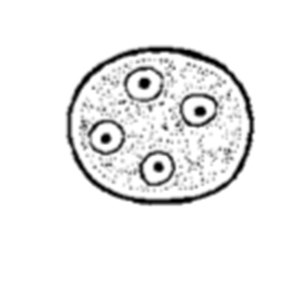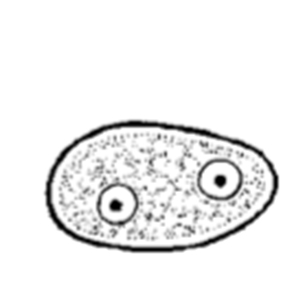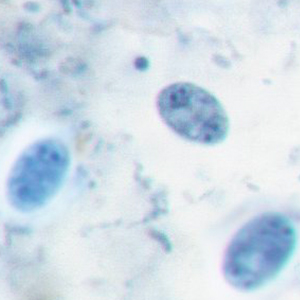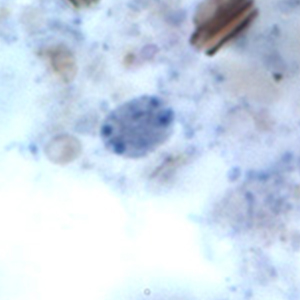Enteromonas hominis is a non-pathogenic flagellate which affects the cecum of rats, hamsters, and primates (Taylor et al., 2015).
Epidemiology
Enteromonas hominis is a non-pathogenic cosmopolitan parasite which affects Old-World Monkeys, including rhesus macaques (Macaca mulatta), and Apes, including chimpanzees (Pan troglotydes) (Taylor et al., 2016). It can also affect humans (Cogswell, 2007).
Description
Cysts are small (4 to 10 µm), oval, stain with Lugol, and contain two to four nuclei organized by pairs at each pole of the cyst. Its shell is thin and not very refringent (Euzéby, 2008).
Differential diagnosis
Differential diagnosis includes other small-sized protozoan cysts (including small flagellated and amoeba cysts). Differentiation is made based on the number and morphology of nuclei, and the size of the cyst. Iron hematoxylin can allow a better visualization of cytoplasmic details (Euzéby, 2008). A coproculture can be useful for trophozoite visualization, hence improving diagnosis.
Clinical significance
Enteromonas hominis is not pathogenic for its hosts (Cogswell, 2007).
Prophylaxis and treatment
As a non-pathogenic parasite, contamination by Enteromonas hominis does not require treatment. Nevertheless, hygienic measures need to be taken in case of diagnosis in a captive setting (Cogswell, 2007).





